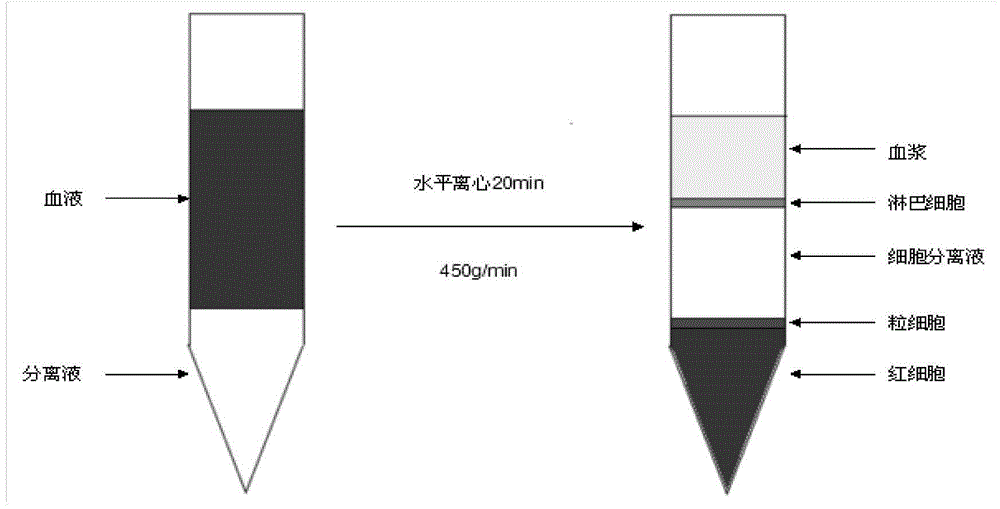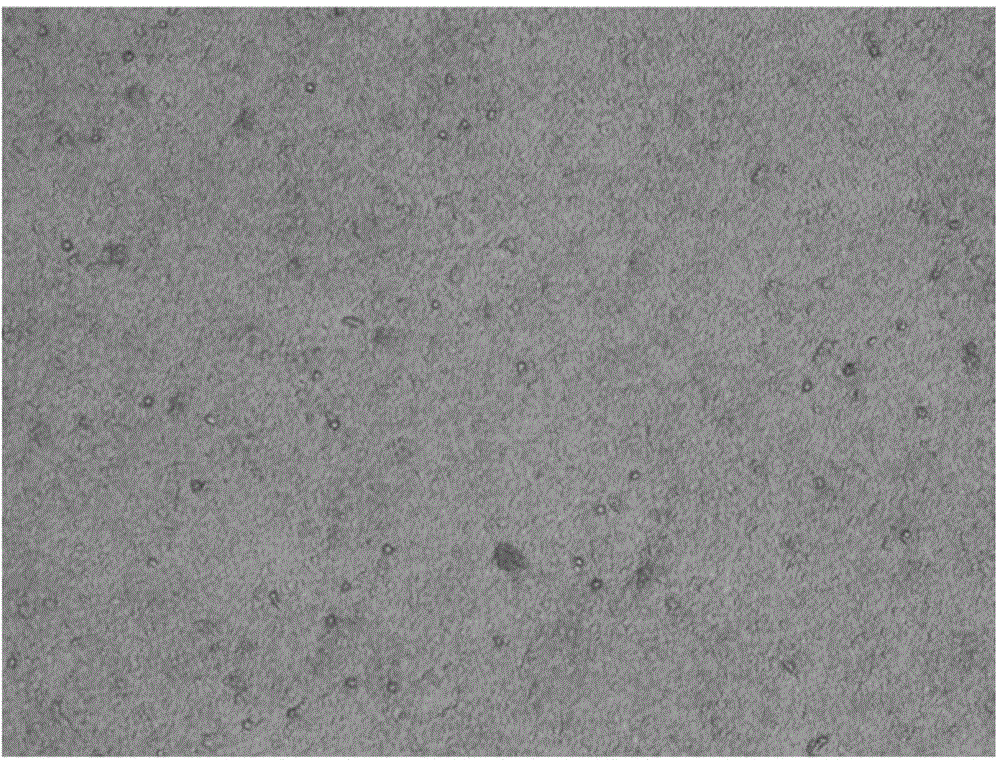Method for culturing cord blood type embryonic stem cells as well as identification and application
A technology of embryonic stem cells and umbilical cord blood, which is applied in the field of culturing stem cells, can solve the problems of tumorigenicity, research and application limitations, and low instability, and achieve the effects of improving the degree of adhesion, firm cell adhesion, and shortening the time
- Summary
- Abstract
- Description
- Claims
- Application Information
AI Technical Summary
Problems solved by technology
Method used
Image
Examples
specific Embodiment approach 1
[0050] Specific embodiment 1: The method for culturing cord blood-like embryonic stem cells of this embodiment is performed according to the following steps:
[0051] 1. Collection of cord blood
[0052] 2. Separation of cord blood
[0053] Mix the cord blood collected in step 1 with the separation solution in a volume ratio of 2:1, centrifuge to collect the mononuclear cell layer, then remove the red blood cells with red blood cell lysis solution, then wash the monocytes twice with PBS, count, and adjust the cell density To 2×10 6 / mL, spare;
[0054] 3. Coating of umbilical cord blood embryonic stem cell culture dishes
[0055] First, the laminin was coated on the bottom of the dish and kept for 24 hours, then washed twice with PBS, and then equilibrated with medium for 10-20 minutes, and then the cord blood cells separated in step 2 were pressed into 1×10 5 / mL is connected to the bottom of the dish, where the laminin is first prepared with PBS into a 10-fold concentration of lamini...
specific Embodiment approach 2
[0059] Specific embodiment two: This embodiment is different from specific embodiment one in that the separation liquid in step two is a lymphocyte separation liquid, and its density is 1.076 to 1.078 g / mL. Others are the same as the first embodiment.
specific Embodiment approach 3
[0060] Specific embodiment three: This embodiment is different from specific embodiment one in that the centrifugation condition in step two is 450g centrifugation for 20 minutes. Others are the same as the first embodiment.
PUM
| Property | Measurement | Unit |
|---|---|---|
| Density | aaaaa | aaaaa |
Abstract
Description
Claims
Application Information
 Login to View More
Login to View More - R&D
- Intellectual Property
- Life Sciences
- Materials
- Tech Scout
- Unparalleled Data Quality
- Higher Quality Content
- 60% Fewer Hallucinations
Browse by: Latest US Patents, China's latest patents, Technical Efficacy Thesaurus, Application Domain, Technology Topic, Popular Technical Reports.
© 2025 PatSnap. All rights reserved.Legal|Privacy policy|Modern Slavery Act Transparency Statement|Sitemap|About US| Contact US: help@patsnap.com



